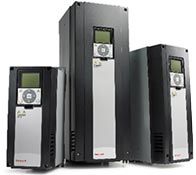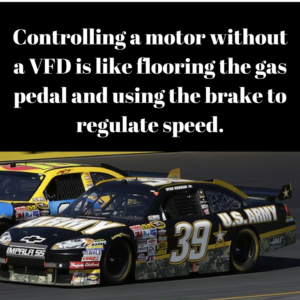Anyone new to HVACR – that’s heating, ventilating and air conditioning and refrigeration for those of you who aren’t in the KNOW – struggles with the crazy alphabet soup that is our industry. We have RTUs AHUs, VAVs and VSDs. We’ve got MUAs and HVs. We’ve got ABC’s coming out of our A-holes.

My favorite ABC-ism has to be the VSD and VFD. They are THE EXACT SAME THING. So why do we need two names? The purpose of the VSD/VFD is to control the speed of a motor for the purpose of saving boatloads of energy. They’re super cool, so why can’t we just agree on a name? By the time you finish explaining that one is Variable Speed Drive and the other is Variable Frequency Drive, the person you’re speaking to is already checking Twitter for #boringHVACstuff. By the way, there’s also a company out there who calls THEIR drive an AFD or Automatic Frequency Drive. Seriously, people? Stop the madness!
Anyway VFDs are awesome, despite their crappy name situation. So, if you’re still with me and not on Twitter, I’m going to tell you a little about them.
How a VFD Works
Here’s the five second explanation of how a VFD works. The drive uses changes in frequency to control motor speed. Now you’re thinking, “OK, what the heck is frequency?”
Technical-ish Answer: (Please feel free to skip to the “real people” answer below. No judgment.) Frequency refers to the number of cycles or sine waves in electrical current and is measured in Hertz. The standard power in the U.S. is provided at 60 hertz/second. In Europe and other cool places I’ve never been it’s 50 hz (which is why the plugs are weird). If you modify the frequency (the # of cycles or sine waves per second) in an electrical current you can speed up or slow down how fast a motor turns.
Real People Answer: Remember playing with magnets as a kid? If you put opposite poles together the magnets push away. Imagine that every time the magnet moves away, it pushes a motor blade. However fast you put the magnets together will increase or decrease how fast the motor blade turns. A VFD basically does that. Only digitally. And way fancier. And most importantly, you don’t have to stand there holding a magnet.
This obviously begs the question…

Why Do I Care How Fast My Motor Turns?
Most of the time, your motors don’t need to turn at full speed and they can still get the job done perfectly well. They can happily spin at half speed and save you – wait for it – EIGHT TIMES the money. That’s right. When they spin at half speed, they don’t just save you half the money, they save EIGHT TIMES the money. I know…MIND. BLOWN. So you SHOULD care how fast your motor goes, because there is big bucks in it for you. There’s a sample energy savings projection on our website, if you’re into that kind of thing.
And I haven’t even told you about the massive rebates from the utility for these babies. A recent project we did had a ten-month payback. It’s pretty sexy stuff. Call me. We can play with magnets while we discuss your massive energy savings potential.

